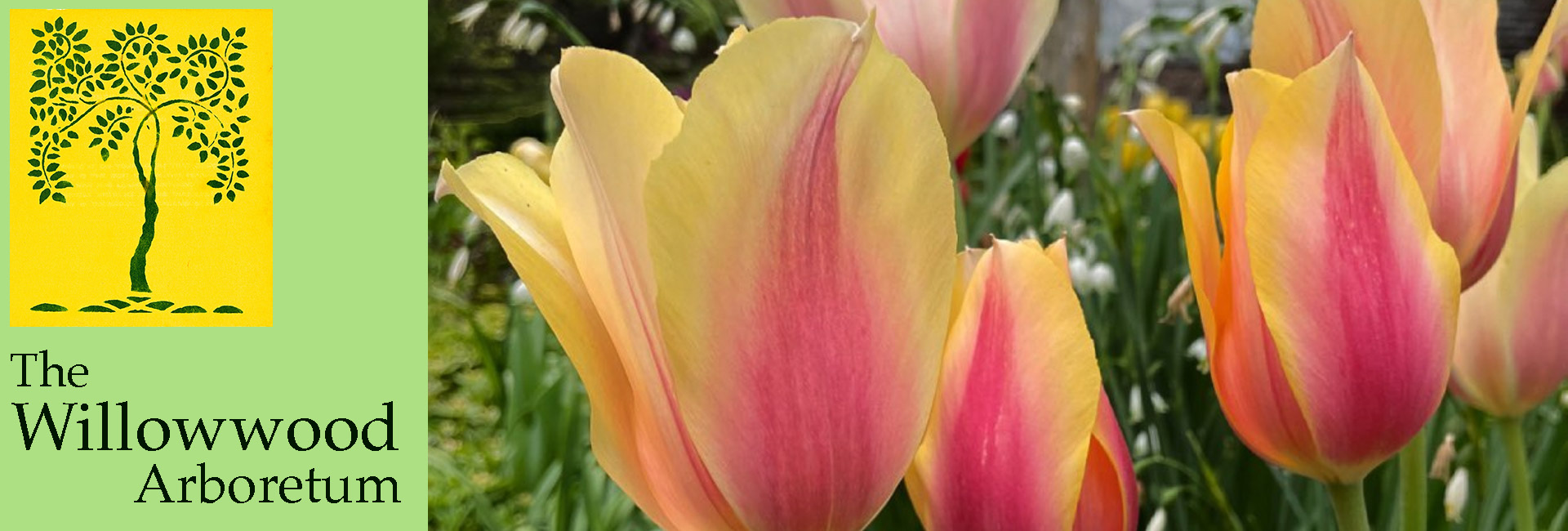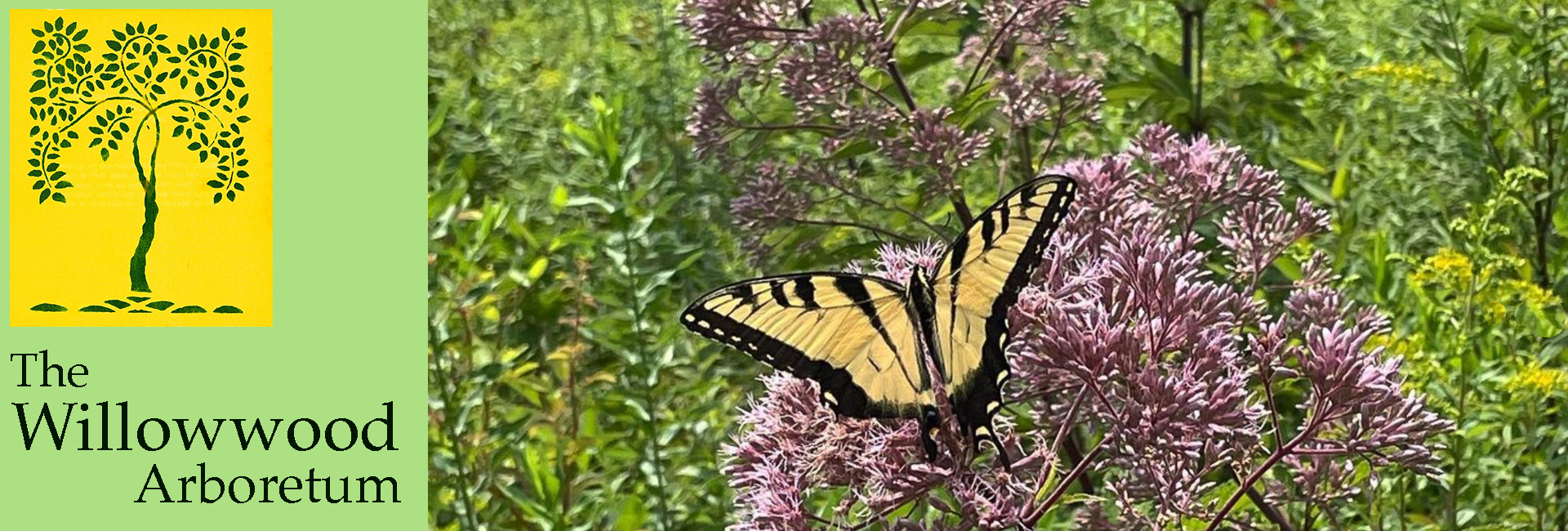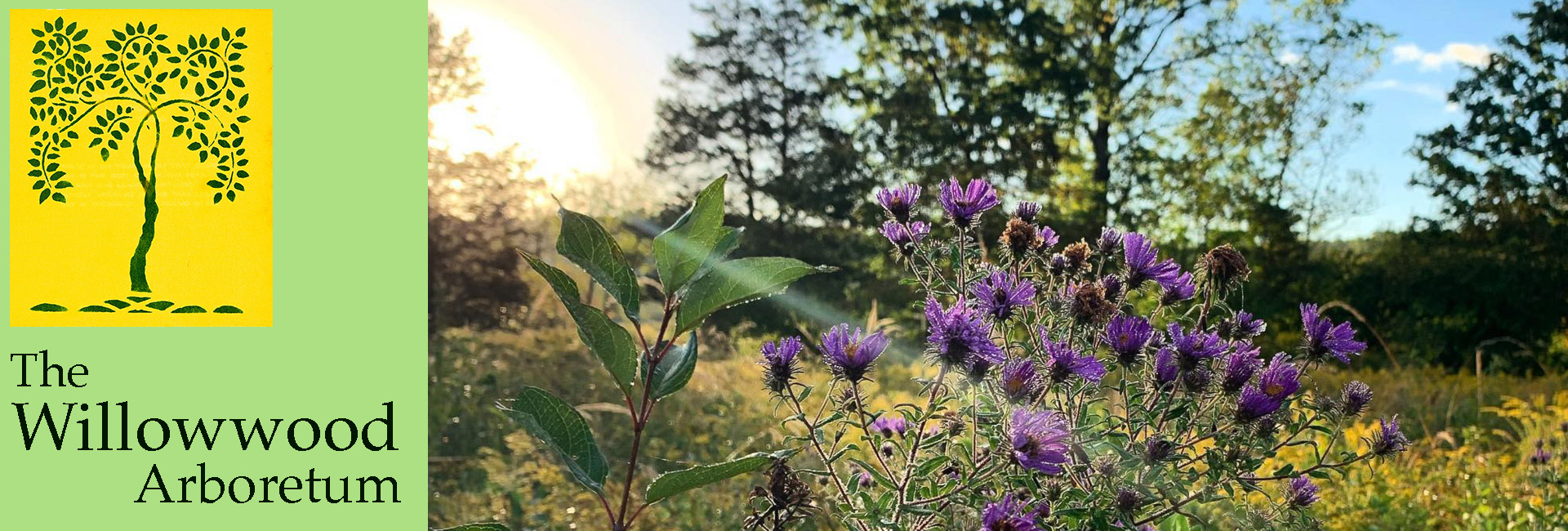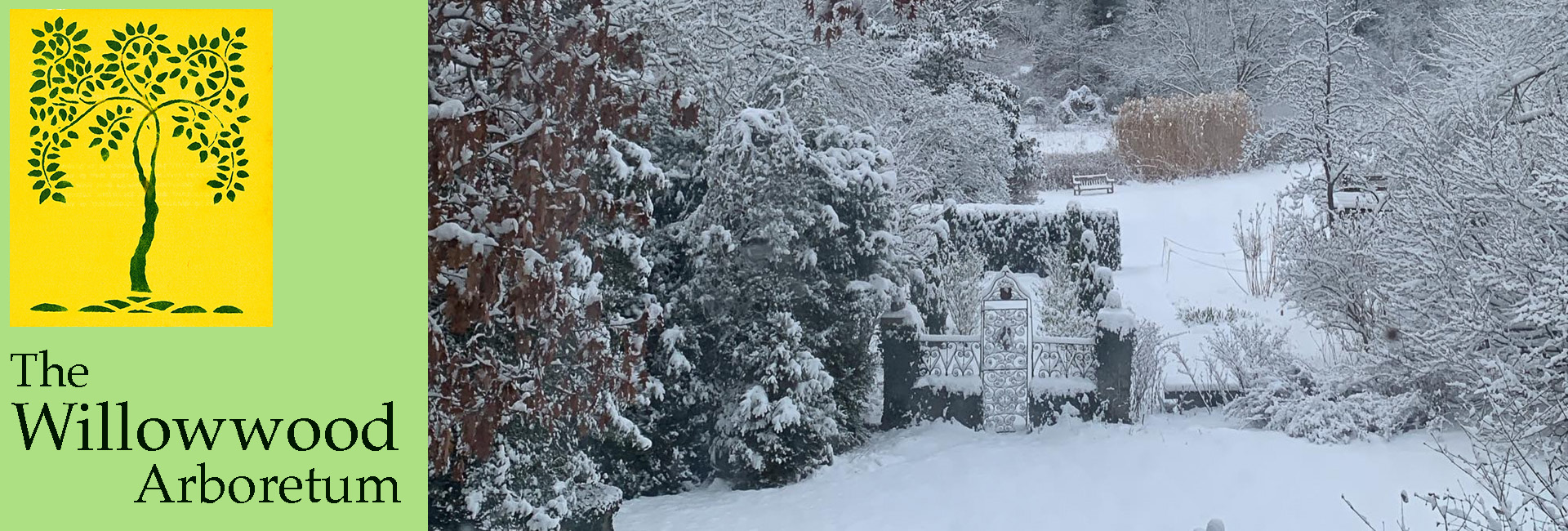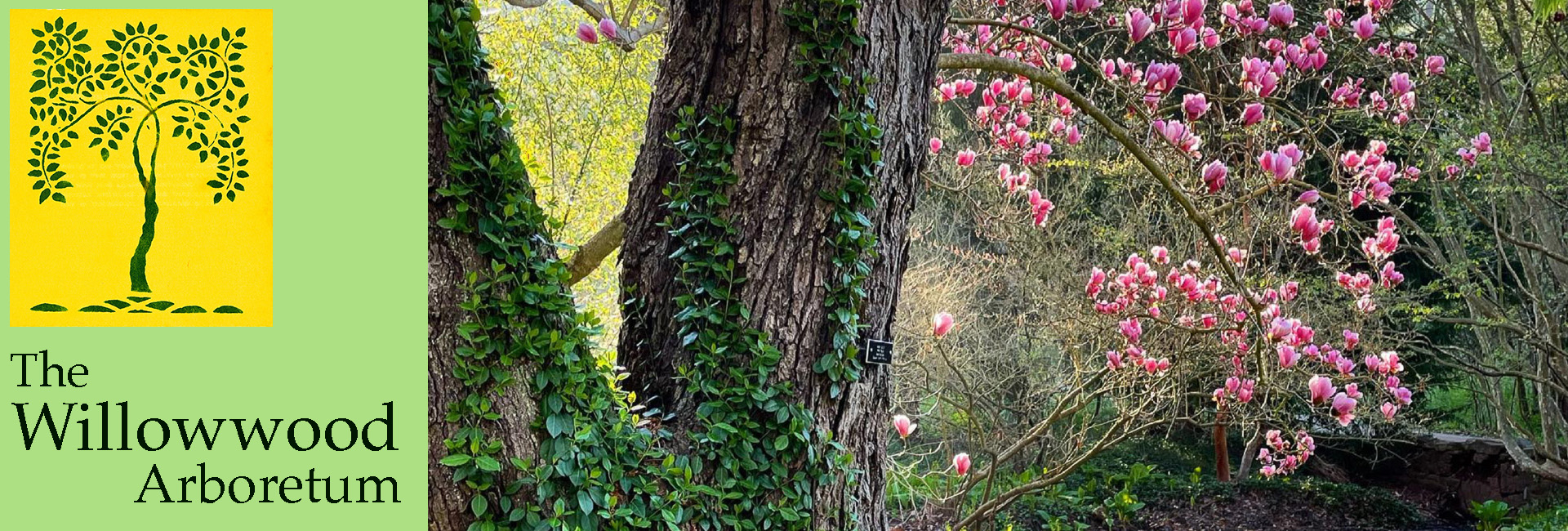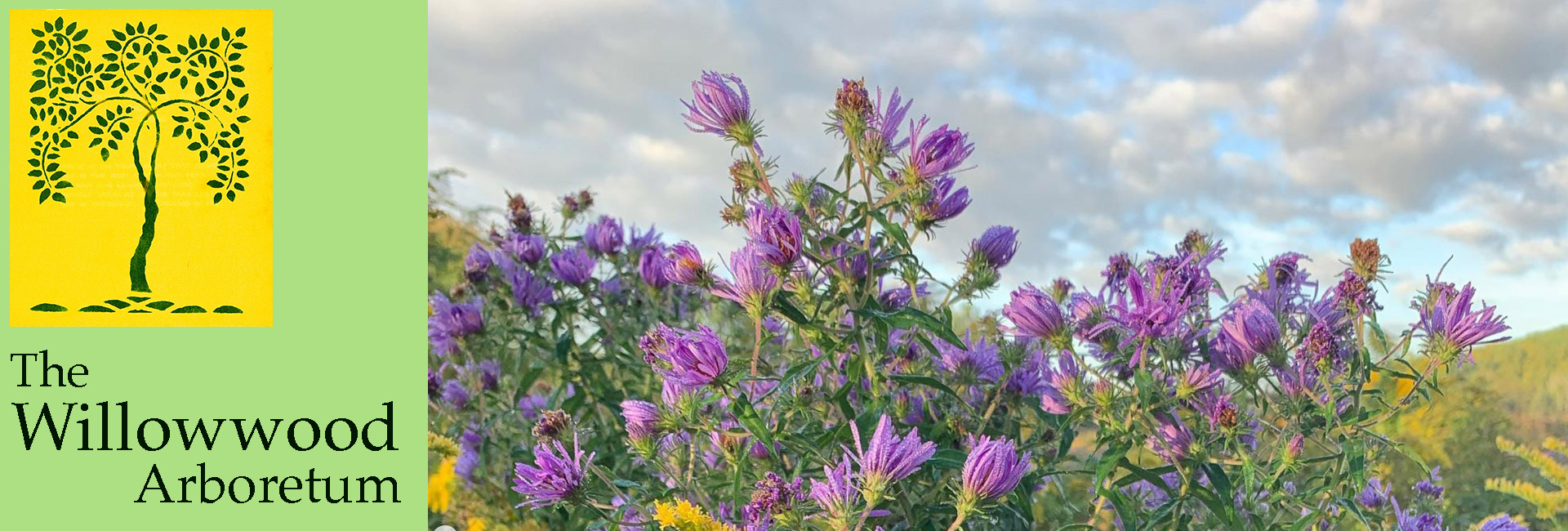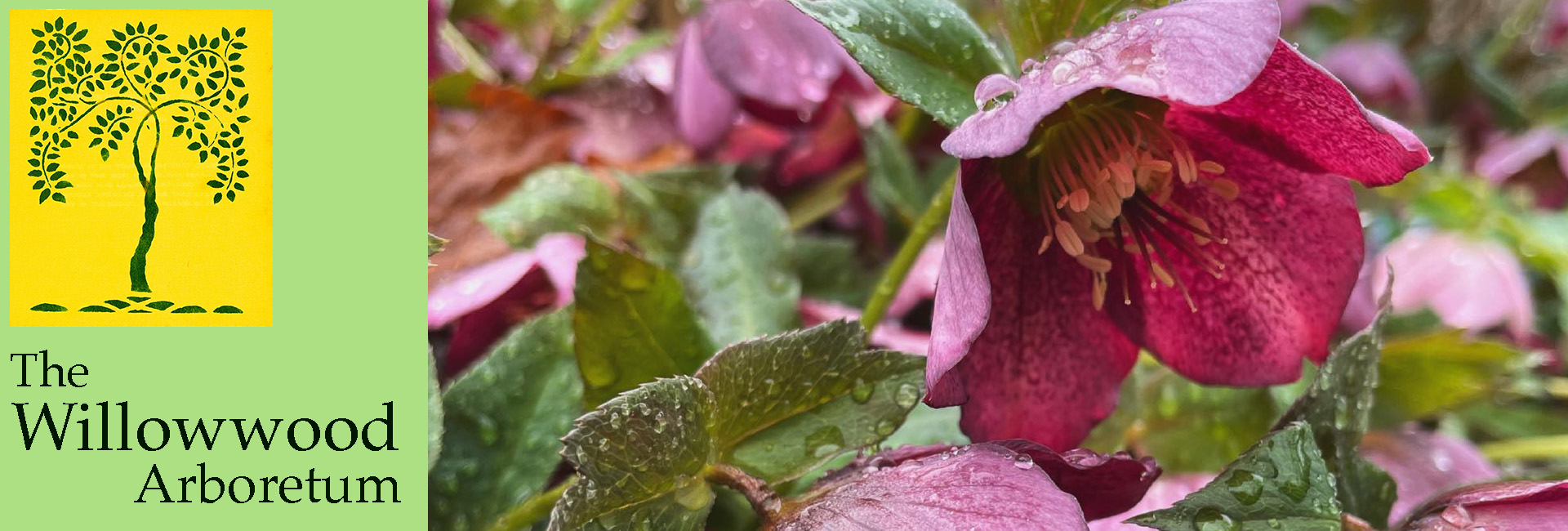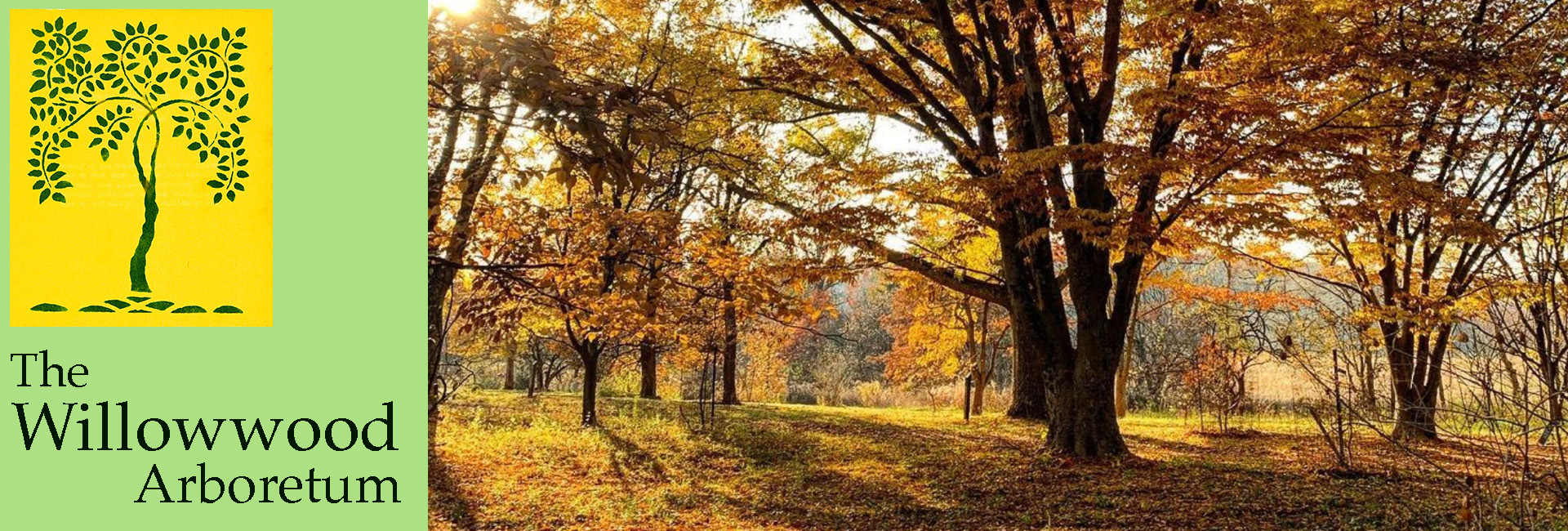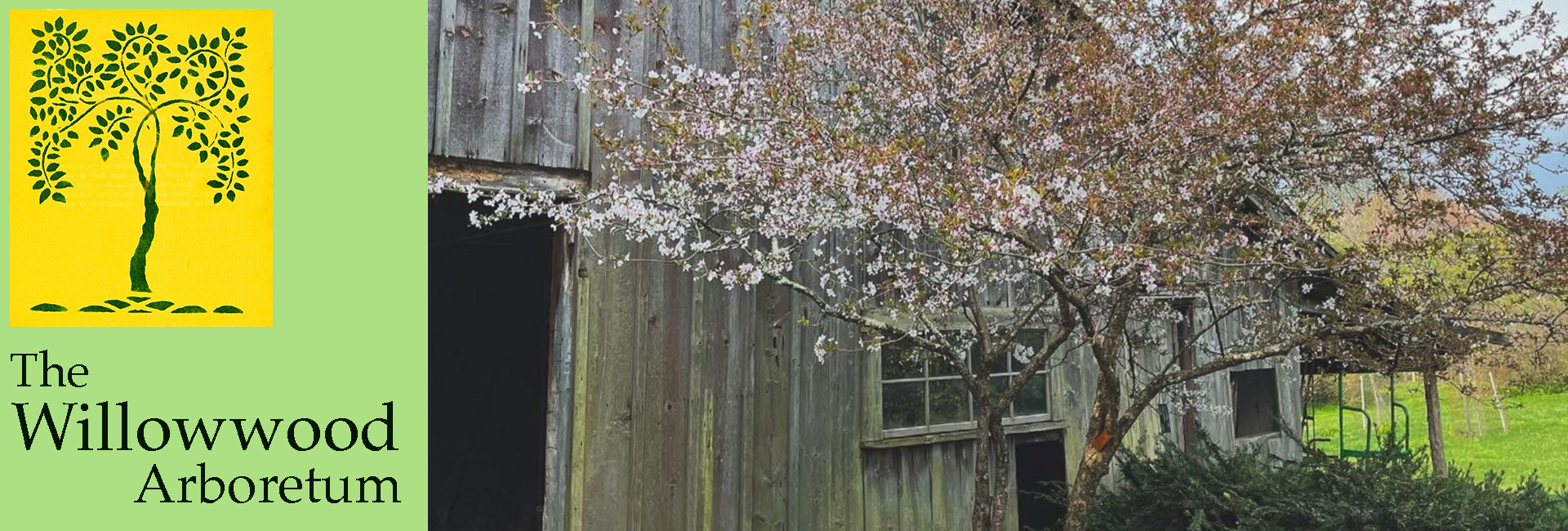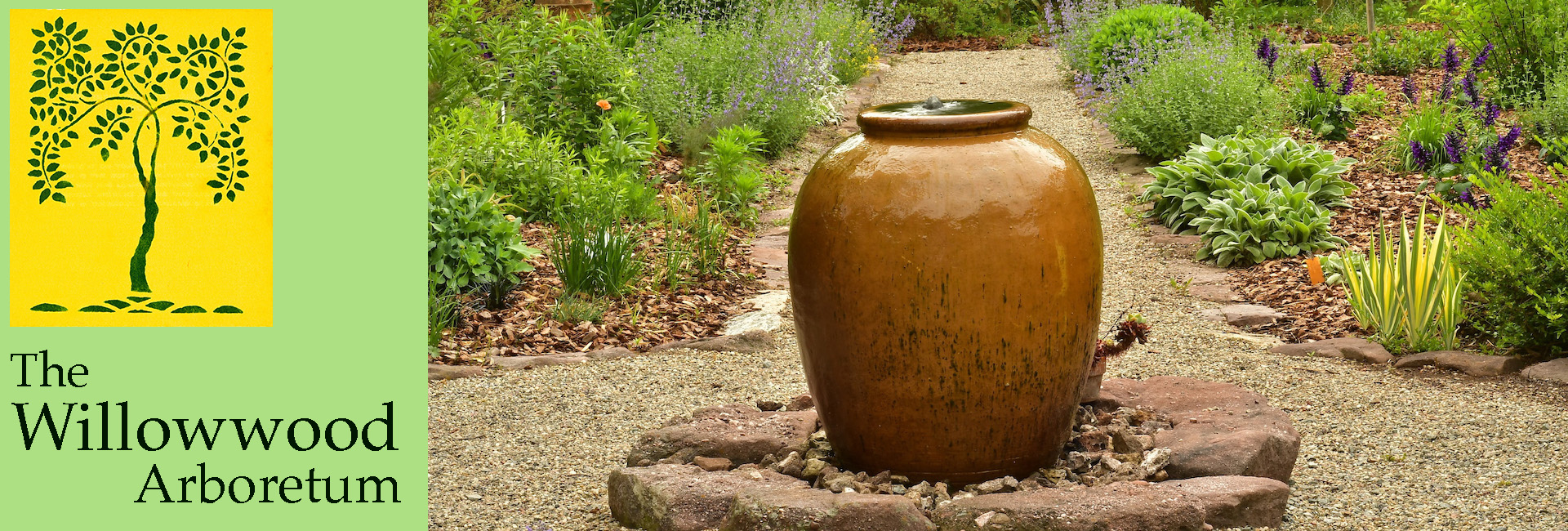September is both the month of abundance, but also the month that the summer starts to unravel, transitioning into fall. Pink is giving way to gold and purple in the meadows, and fall flowering grasses are sending up their inflorescences. Now, the coppery inflorescences of Sorghastrum nutans greet you as you drive in to Willowwood. While those in the meadows are wild, this species is also excellent for garden places that call for a large grass.
At this point in the season, most plants almost seem tired, their flowering or already fruited heads heavy and leaning on one another for support. Some plants always need support, like most morning glories: case in point, our heart-and-honey vine, Ipomoea luteola ‘Sunspots’ that can be found rambling through the panicled hydrangea by the propagation house, among other spots.
Speaking of morning glories, the shorter days have finally triggered the moonflowers, Ipomoea alba, to flower. To see these dinner-plate size flowers fresh, get to Willowwood early and check the Thayer Yew within the circle, in front of the Red Barn. If you’re lucky, you may hear the call of a barred owl that’s been spending time here, preening and providing natural pest control. It’s often by Tubbs house and the nearby Red Barn, much like the Hydrangea involucrata that’s spent 30 years in the nearby Cornus mas Bed. This species is so unlike other Hydrangea: it’s slow-growing, and has a charming mounding habitat and buds that resemble peonies!
The Rosarie looks very fresh, with dreamy drifts of Anemone ‘September Charm’. You may also notice the new additions to our Mediterranean-inspired garden: figs! A true Mediterranean species, Ficus carica ‘Brown Turkey’ does well in our area. Speaking of fruit trees, don’t forget to admire the colorful annual display in front of the Stone Barn. Although it’s not winter hardy, the papayas (Carica papaya—yes, the tropical fruit!) within the display are flowering and have even set small fruits. In contrast, the winter-hardy “seven sons” tree, Heptacodium miconioides on the other side of the Stone Barn has just started to flower.
In the cottage, Rosa ‘Marie Pavie’ continues to send out flushes of scented new blooms. I cannot get over how well this rose performs, as one may be able to tell by how many cameos it’s had in these reports. While the cottage is nearly always packed with flowers, I’ve been very taken with the punchy flowers of Rudbeckia submentosa ‘Henry Eilers’. They look fabulous in the garden as well as in cut flower arrangements.
Willowwood is unique in so many ways, but one of the most special to me is that it serves as wildlife habitat as well as carefully curated gardens. Aside from our winged residents, we have some very nice wild-occurring native plant species. A walk through the Bee Meadow is a lesson in native meadow plants, like the charming Gentiana clausa and Chelone glabra scattered throughout, both in bloom.
